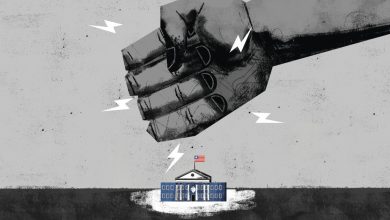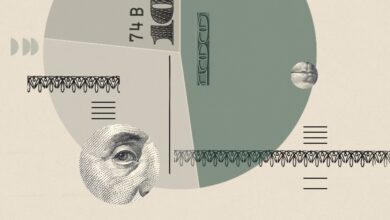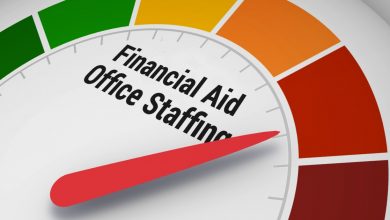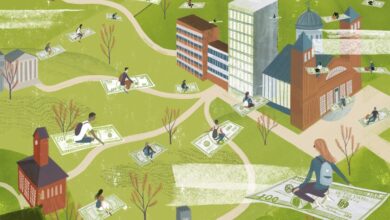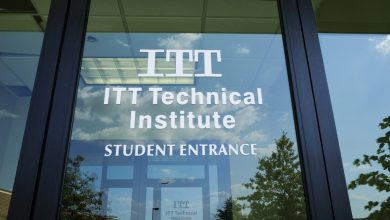Fighting Claims of Research Misconduct, Stanford’s President Isn’t Pulling Punches
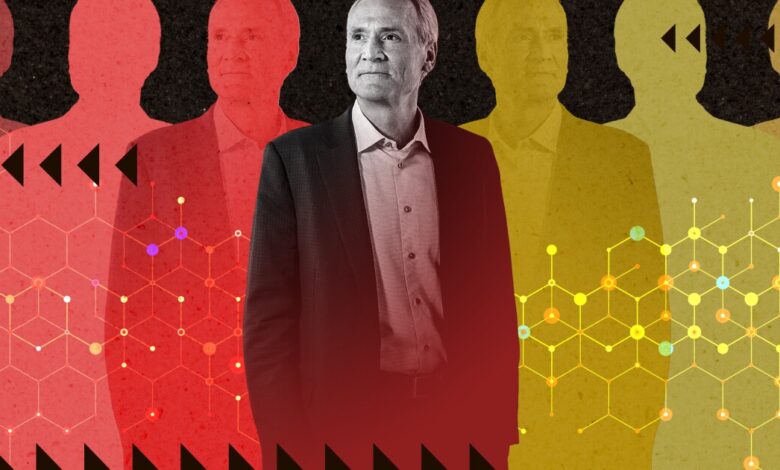
[ad_1]
Stanford University President Marc Tessier-Lavigne is in hot water.
Since last fall, allegations of image manipulation in scientific papers for which Tessier-Lavigne is listed as an author have spurred questions about his decades-long scientific career. While members of Stanford’s Board of Trustees and several outside legal and scientific experts review the claims of scientific misconduct, Tessier-Lavigne has remained at the helm of one of the world’s premier research institutions.
His unusual position as president-under-investigation mirrors an unusual public-relations approach. Instead of staying silent, as many embattled leaders do during an investigation, Tessier-Lavigne has vocally defended his actions, criticized the student newspaper in harsh terms, and cast himself as a faculty member first and president second.
Some experts in higher ed and science have raised their eyebrows at the president’s tack. In embracing a defensive posture, critics say, he may have compromised his role as a community leader.
The Story So Far
The saga began in November when the independent student newspaper, The Stanford Daily, reported on concerns from fellow scientists about certain images in several of Tessier-Lavigne’s papers from over a decade ago.
The president responded to that article and subsequent journalism by maintaining that he has “never submitted a paper without firmly believing that the data were correct and accurately presented,” according to a statement published to the Tessier-Lavigne Laboratory website in December.
Stanford’s Board of Trustees created a special committee and hired a law firm to review the papers. In January, five neuroscience and biology experts outside of Stanford joined the committee to help review scientific facts. At the end of April, the Board of Trustees said the law firm and scientific panel had “reviewed more than 26,000 collected documents …. with the assistance of experts in image forensics where needed.” A final report is expected to be published in July.
From the start, there have been concerns about the Board of Trustees overseeing a review of one of its members. In December, The Stanford Daily reported that an investment firm co-founded by one of the trustees and special-committee members, Felix Baker, owned an $18-million stake in the biotechnology company co-founded by Tessier-Lavigne. Following the story’s publication, Baker left the special committee “to avoid any questions of potential conflicts,” a representative of the committee told The Daily.
‘He’s the Big Boss’
Under investigation, Tessier-Lavigne has recast himself as a biology professor seeking to set the record straight. In response to claims of alleged misconduct, he has published five statements to his Stanford lab website, some of which he fashions as from a fellow scientist, not the president.
“While I am usually in contact with you in my role as university president, I am writing here first and foremost in my capacity as a scientist,” Tessier-Lavigne wrote in the first statement, published on December 5.
Yet at least three of the five statements were emailed to faculty and staff from an email address listed as Marc Tessier-Lavigne, [email protected], according to emails obtained by The Chronicle. The first two emails include the president’s statements as text. The third directs recipients to the Stanford lab website, where the president criticized The Stanford Daily:
“Many of you may have seen an article in The Stanford Daily today that makes a string of false allegations regarding some of my scientific findings on neural degeneration,” Tessier-Lavigne wrote in an email to faculty and staff on February 17. “For those of you who wish to know the facts, please visit this link at my lab website.”
In response to questions about his choice to use his lab website to defend himself, Tessier-Lavigne and his legal team wrote: “I believe it is important to communicate directly with the Stanford and scientific research communities to correct the record regarding false and misleading allegations in The Daily’s reporting that have unfairly questioned my integrity.”
Marty Schenker, a member of Tessier-Lavigne’s legal team, wrote in a subsequent statement to The Chronicle that the president’s use of his “university email” was neither “inappropriate” nor “inconsistent with his statement that he was writing those messages ‘first and foremost in [his] capacity as a scientist.’”
Research websites are typically reserved for information about the science and scientists of the laboratory. Tessier-Lavigne’s behavior is more in line with faculty members than a president, according to Sondra Barringer, a professor in education policy and leadership at Southern Methodist University.
“That he is a scientist just responding, this is not particularly unusual, at least based on my experience,” she said. “I think what is unusual is this is all happening while he’s president.”
He can write that it’s from his position as a co-worker or colleague, but he’s not. He’s the big boss of Stanford. He has a position of tremendous power over the university.
Tessier-Lavigne’s use of his Stanford lab website to discuss concerns about work from past employment struck Elisabeth Bik as strange. Bik is the research-misconduct expert who examined Tessier-Lavigne’s papers for The Stanford Daily. She suspects that several of the president’s past papers contain manipulated imagery. “It’s almost like his whole lab is behind those statements,” Bik said. “These are very personal statements.”
Bik said Tessier-Lavigne’s emphasis on his scientist identity rings hollow. “He can write that it’s from his position as a co-worker or colleague, but he’s not. He’s the big boss of Stanford. He has a position of tremendous power over the university.”
Others, such as Stanford professor William Newsome, view Tessier-Lavigne’s actions as a natural response by a scientist whose reputation was “seriously impugned.” Newsome, a neurobiology researcher, was one of the authors of an opinion piece urging the Stanford community to not rush to judgment while the investigation continues.
“Tessier-Lavigne is a scientist first, and a university president second,” Newsome wrote in an email to The Chronicle. “He has every right to defend himself on his lab website. Any of us working scientists would likely do the same thing.”
Tessier-Lavigne’s statements shifted in tone following a story by The Stanford Daily in February reporting on allegations of scientific misconduct in a paper from his time at the biotechnology company Genentech.
While statements posted by Tessier-Lavigne in December claimed “responsibility for any concerns that arise with respect to any work with which I have been involved,” by February the statements were calling reporting by the newspaper “preposterous,” “breathtakingly outrageous,” and “replete with falsehoods and betrays a misunderstanding of science and the scientific process.”
Tessier-Lavigne’s lawyer, Stephen Neal, also wrote to Theo Baker, the freshman student journalist at The Daily who broke the story. (Baker won a 2022 George Polk Award in Journalism for his reporting on the alleged misconduct.)
“Any dissemination of these allegations has been and will continue to be extremely reckless,” Neal wrote to Baker on February 9. Tessier-Lavigne linked to this letter, and a second one from Neal to Baker on February 17, in a statement published on his lab website in February.
Bik said such statements and letters “are pretty harsh, coming from a position of the ultimate powerful person in the university, directed towards a freshman.”
Schenker said the students at The Daily “are acting as journalists.” He added that the communications from Tessier-Lavigne’s legal team “have been appropriate, factual, and rooted in a desire to correct the record against what we believe is false, misleading, and reckless reporting.”
“We do not take issue with The Daily continuing to report on the investigation; however, we did and continue to take issue with what we believe is false and reckless reporting based on unsubstantiated information from anonymous sources that has been directly refuted by on-the-record statements,” Schenker added. (The Daily has responded to Tessier-Lavigne’s criticisms by saying it stands by its reporting.)
Muddied Waters
Jeffrey Flier, a former dean of Harvard Medical School, has overseen several investigations into scientific misconduct throughout his career. He found Tessier-Lavigne’s critical statements “surprising” and said Tessier-Lavigne “is in a position to influence many people by his statement.”
Targeting a student journalist may challenge the community’s trust in Tessier-Lavigne, said Sean Rossall, a public-relations counselor who specializes in college presidents and executive leaders (Stanford is not a client). “As you go into these situations, you want to have a strong built-up rapport with your community and a bank of trust to draw from as you’re engaging in conversations and engaging in this ongoing narrative,” he said. “Because the reality is there’s going to be a lot of reporting, and rightfully so, as the process unfolds, and you’re not always going to be in a position to be able to respond.”
Tessier-Lavigne’s public response also contradicts common advice to remain quiet during an investigation. This is to avoid influencing the investigation or creating further information that needs to be incorporated into the review.
Aidan Ryan, a public-relations consultant at Edelman, of which the Stanford Board of Trustees is a client, responded on behalf of the special committee and confirmed that Tessier-Lavigne’s statements will be incorporated into Stanford’s investigation. “The panel is looking at all relevant evidence, and will evaluate Marc Tessier-Lavigne’s statements in the context of all the evidence assembled,” wrote Ryan to The Chronicle.
But not being able to defend yourself often is an uncomfortable position to be in, Flier said.
Many investigations exonerate the scientists in question, he said, but that doesn’t always make up for the reputational wounds caused by the allegations. Tessier-Lavigne has likely already suffered “probably more harm than other scientists because he has this incredibly important role of leading other scientists and academics,” Flier said.
Still, Flier advises remaining quiet and letting the investigation play out. Michael Salinas, a lawyer who specializes in higher-education law, agrees. The statements might “muddy the waters,” Salinas said, and could end up in the trove of documents reviewed by the special committee. “I probably would advise him not to say very much,” Salinas said.
Tessier-Lavigne has hired his own legal counsel and PR consultant. “I retained my own counsel to assist me in communicating with the special committee of the Board of Trustees and its counsel,” he wrote to The Chronicle.
When everything is going well, the legal and communication needs of the university are aligned with those of the president, Rossall said.
In other times, the interests of the president and university diverge.
“In many instances, you want to be able to allow the president to speak without speaking with the authority of the institution, and this very well may be one of those situations,” Rossall said. “If you have Stanford the institution conducting its own review of the situation, you also don’t want Stanford the institution issuing rebuttals on his research.”
[ad_2]
Source link


